Here we have a cross reference chart that allows you to quickly find a basic meaning for any card in the Tarot Lower Arcana.
Tarot is the system through which a reading of the cards in a tarot deck helps you through disturbed times by offering to give a reflection on your past, present and future.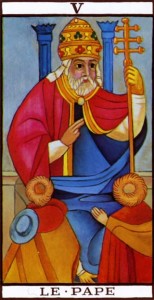
Tarot is closely linked with astrology as each card is linked to a planet, part, or astrological sign. Tarot cards are utilized for divination, frequently known as fortune telling. However many therapists have used them too, feeling the cards regularly make patients dig in to how they feel about themselves. This is done through the subconscious. As an example, let’s assume you are aware that at work things aren’t going well, but you don’t let yourself accept it. Continue reading
There is an uncanny link between mindset and the success of intuition.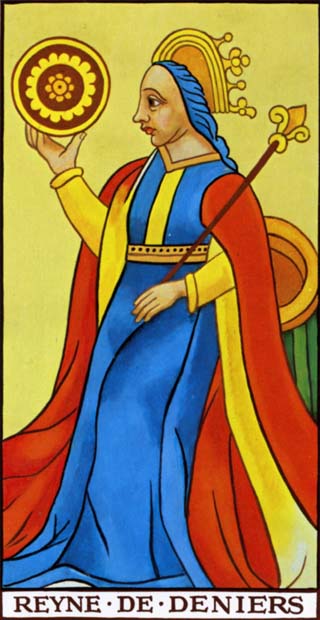
Dr. Judith Orloff and others point out that it is very difficult to tap into your intuition when you are tense or highly stressed. And if you the kind of person that is reluctant to trust impressions that are difficult to confirm on the spot, you will have little success getting useful information from your intuition.
A relaxed open mind is the first step to accessing intuition. It is also the first step in tuning in to your spirit guides and working with the Tarot.
Even the most highly skilled psychics and mediums will tell you that they cannot access a person who chooses to block himself.
So it is highly ironic that the very people who try so hard to ‘test’ the reader, or who flaunt their skepticism find it so easy to find evidence to back to support their skepticism. And those who come to a reader with an open, relaxed attitude enjoy a rich and valuable experience.
It is as if the Tarot cards were offended by the skeptical querent’s lack of respect. The upshot is that each subject has an experience that reinforces their perception.
There is a certain logic to this, but it makes it hard on the reader who has to handle a skeptic in a situation such as a party where they are expected to read everyone who comes to their table.
In many ways, the cards that pop up in a Tarot spread reflect the mindset of the person being read. If the querent is focused, the cards will be, too. If the client’s mind is scattered, so too, will be the reading.
Tarot is a tool to access intuition. Like all tools that work primarily by using the ‘right-brain,’ Tarot’s processes defy logic.
The right-brain is the realm of the imagination and it speaks through the language of symbol. It is through the right brain that you are able to access your intuition.
Unlike beginning readers who tend to rely on book definitions, more confident and experienced readers will use their knowledge of book meanings as a starting point and them allow their intuition full reign.
But to do that, they need to be able to tap into the energy of the querent. Each reader has his/her style of working. Some readers that use an interactive approach need the active participation of the querent to stimulate their intuition. Others are able to tune in psychically.
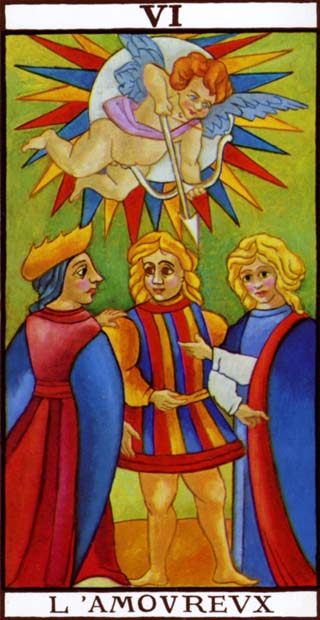 But no matter the style of reading, every Tarot reader needs the active cooperation of the client to deliver a successful reading.
But no matter the style of reading, every Tarot reader needs the active cooperation of the client to deliver a successful reading.
Submitted by: Ellen M. Zucker
http://practicalastrologyandtarot.com
Tarot cards speak in the language of pictures rather than words.
The meaning of any image in a Tarot reading is influenced by an interplay between the physical objects depicted, the history and traditions behind them, and the meanings you impose on them.
These elements work together differently from reading to reading. But the one constant is that the card’s image always tells a story that is directly relevant to your situation. And that story will differ for each person and even for the same person under different circumstances.
These thoughts were on my mind when I sat down to read an article describing an exhibit of medieval stone figurines created in Dijon, France about to be exhibited in the US.
These figures, called ‘mourners,’ were created to encircle the tomb of John the Fearless, the second duke of Burgundy.
What caught my eye was the photograph of John’s tomb, resting comfortably next to that of his wife, Margaret of Bavaria. A life-size likeness of John rests supine, hands clasped in prayer next to the likeness of his wife in the same position.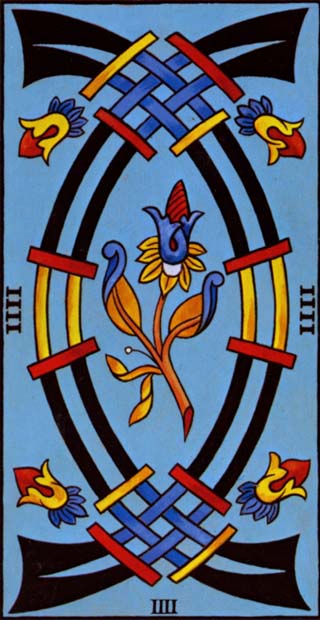
The Four of Swords from the Rider-Waite-Smith deck shows an image of a sculpture of a man in medieval dress lying atop a tomb in exactly the same position: supine, with hands clasped in prayer. He is in a room with thick white walls and a stained glass window on the upper left.
The Dijon mourners are there to pray for their duke and duchess to help them get to paradise. The duke and duchess themselves lie, eyes open, awaiting judgment.
While the RWS Four of Swords does not show the mourners, nor the angels at their heads and lions at their feet, it is clear that the imagery of the RWS card is drawn from this same medieval tradition.
The imagery speaks of a pause in the journey from life to death as the soul in question awaits news of his fate. While the expressions on the faces of the Dijon sculptures and the face of the RWS figure are peaceful, the eyes of the RWS figure is closed.
The RWS figure appears to be meditating. No matter how violent or unpleasant his demise, he is at peace now and his focus is on matters of the spirit.
The imagery of the casket frightens some people, and in the case where the card came up in a reading for a mother mourning the death of her young adult son killed in a shooting, the imagery is only too literal. But in my experience reading Tarot cards for many years, this card does not portend death.
Far more commonly, the card speaks to a time-out or a sabbatical; a time for the querent to step out so s/he can reflect or refocus. A common example is a reading involving a mother taking time away from her career to raise her young children.
Upon reflecting on the article, I now see an additional layer of meaning: the card speaks to that stage in a metamorphosis similar to that of the caterpillar who retreats into his cocoon. He retreats to avoid dissipating his energy with the demands of the outer world while he undergoes transformation within.
Submitted by Ellen M. Zucker
http://practicalastrologyandtarot.com
Going back to the days of Aleister Crowley, the individual Major Arcana cards have been assigned to specific planets.
As a student of astrology and the Tarot, I do not always subscribe to the traditional correspondences. For example, to me, the energy of Uranus is a much better fit to The Tower than Mars.
The argument for making Mars The Tower’s ‘ruler’ is that The Tower’s edifice, described as some as the Tower of Babel, represents man’s hubris and a structure of lies.
The Tower image shows lightning striking the crown on the top of the tower edifice, the crown being false materialism and the lightening bolt, the flash of truth striking down the edifice and violently displacing the crown.
Mars represents ego well. Mars is dignified in Capricorn where its ambition is transformed into concrete structure. And the flames emanating from the tumbling structure is consistent with the symbolism of Mars and its sign, Aries.
Lastly, Wald Amberstone, co-founder of The Tarot School, likens the card’s image as a representation of a phallic symbol at the time of climax.
Certainly this is Mars.
But the lightning, the sudden flash of awareness, the crack as the structure tumbles, are hallmarks of Uranus.
Arthur Edward Waite in The Pictorial Key to the Tarot describes the preceding card, The Devil, as “the fall into the material and animal state, while the other (The Tower) signifies destruction on the other side.”
Uranus’ energy is depersonalized. It is completely a product of the intellect and the lightning bolt is its hallmark.
The sudden bolt of lightning describes the operation of Uranus as anyone who has experienced a transit of Uranus can testify.
Uranus is the first planet discovered that is too far away to be seen by the unaided human eye. For centuries, astronomers assumed that no planet extended beyond Saturn, hence that planet’s association with limits and boundaries.
Then in 1781, astronomer William Herschel discovered Uranus with the result that the prevailing world-view of the Universe was upended much in the same way that Uranus transits result in upset and breakthrough on a societal and personal level.
Uranian energy is a bolt out of the blue, coming from somewhere outside of our individual selves like the bolt of lightning from above that upends The Tower and its crown.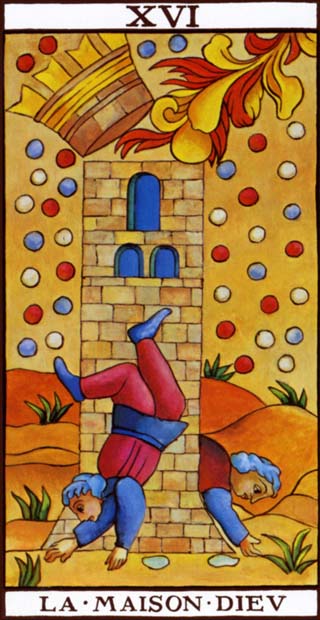
In my view, while Mars is a good descriptor of the Tower in the card, Uranus better describes the actual energy of the card.
Thoughts?
Submitted by: Ellen Zucker
http://practicalastrologyandtarot.com
Take your tarot cards and lay them out in front of you. You will see that your tarot deck is in 2 sections.
The minor ‘arcana’ and the major ‘arcana’.
The word “arcana” means secrets or mysteries. Continue reading
Theme by Anders Norén — Up ↑